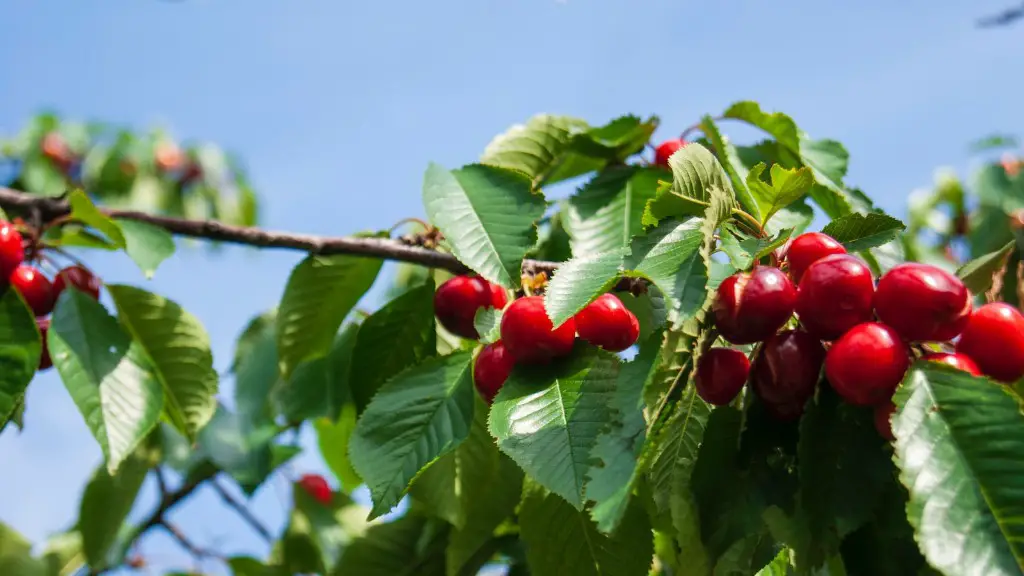Palm trees are one of the few plants that is widely accepted as being a true tropical plant. These trees, classified as monocots, grow in tropical and subtropical locations across the world. They are iconic symbols of the tropics, adorning many a beachside background and vacation photo. While the majority of people are familiar with these plants, there is more to know about what makes them unique and why they are so important to some areas.
The most recognisable characteristic of palm trees is their unusual leaf structure. These plants have long, fan-like leaves instead of short, compact leaves like most other plants. This structure allows the same amount of transpiration to occur in a variety of different climates and is the reason why palm trees can survive the heat of the tropics. Palm tree leaves are also adapted to the humid conditions and high temperatures which are common in tropical regions. Their leaves are waxy and coated with resin to protect them from the harsh weather and allow them to retain moisture.
Another interesting characteristic of palm trees is their amazing root system. Palms have an extensive root system which extends far beyond the boundaries of the trunk. This large root system ensures that the tree will be able to get the necessary nutrients and water from the soil. In addition, the root system helps to anchor the tree in strong winds and can prevent the tree from being uprooted in a storm.
The adaptability of the palm tree to different climates and conditions helps explain why it is such an iconic symbol of many tropical regions. Its ability to grow in many different climates, both warm and cool, along with its aesthetically pleasing look makes it a popular choice for landscaping and decoration. In addition, in areas where the climate permits, some types of palm trees can be harvested for their fruits and nuts. In some cases, the valuable timber from the trunks of the larger members of the palm family can also be used in construction and other applications, depending on the species.
Palm trees provide additional benefits like creating habitat for wildlife and providing shade for outdoor activities due to the large size of their leaves and trunks. They are known to improve air quality by filtering dust, absorbing carbon dioxide and releasing oxygen, and can help improve soil quality by helping to break down and recycle nutrients.
palm trees often aid in stabilising deserts and providing more fruitful land due to their deep roots and extensive root systems. The water retained by their large leaves and root system helps to slow down erosion and minimise salinisation. This helps to prevent desertification of land and allows other plants and ecosystems to flourish in areas they otherwise wouldn’t.
Importance of Palm Trees
The importance of palm trees to the tropics cannot be overstated. They can provide food, shelter and shade for humans, livestock and wildlife. They are an integral part of the landscape, providing a vital resource for local communities. Many tropical areas rely on the production and sale of palm oil, palm hearts, palm living skeletons and the like for economic purposes.
Palm trees also help to provide environmental benefits. They can help to reduce the impact of rising sea levels on coastal areas, by helping to reduce beach erosion. This is because they are able to absorb and store large amounts of water in their root systems. In addition, they can also help to offset excess carbon dioxide by absorbing it and releasing oxygen, something that has become all the more important now that climate change is a major issue.
In areas where the climate permits, including many tropical countries, the harvesting of palm trees can be an essential source of livelihood and income. Palm oil and other related products provide an important resource for many people around the world, helping to reduce poverty and improve living standards.
Conclusion
From their unique leaf structures, root systems to their importance to local communities, there is no doubt that palm trees are an integral part of the tropics. They are a beautiful sight to behold, and the many benefits they provide to those living in the tropics makes them an important resource. It is truly remarkable that such a spectacular plant can survive and thrive in such harsh environments.
Types of Palm Trees
Palm trees can be grouped into different types according to their geographical location, height, and type of habitat they prefer. Some of the more commonly known types include the date palm, coconut palm and African oil palm. Each of these types has its own unique characteristics but they all share the same tropic origin and adaptation to different climates.
The date palm, or Phoenix dactylifera, is an age old species originating from the Middle East and parts of North Africa. It is widely cultivated for its sweet fruits, called dates. The date palm is a single-stemmed tree with a tall slender trunk and has a large, fan-shaped crown with large leaves.
The coconut palm, or Cocos nucifera, is native to the coasts of Southeast Asia, but is now widely cultivated throughout the tropics for its fruits. The coconut palm is a single-stemmed tree with a tall but not as slender trunk as the date palm and has a curved crown of dark green leaves. This type of palm tree is a great source of coconuts, oil, vinegar and sugar.
Finally, the African Oil Palm, or Elaeis guineensis, is native to West and Central African rainforests. It has a single-stemmed trunk and a crown of yellow-green leaves. This type of palm tree is used for producing palm oil, which is widely used in processed food, cosmetics and biofuels.
Palm Tree Conservation
Many countries around the world have recognised the need for protecting and conserving palm trees, as well as the landscapes where they grow. Several conservation initiatives around the world are being conducted to help protect palm trees from destruction, illegal trade and degradation of their habitats. Palm tree conservation is particularly important in Latin America, because it is estimated that over 91 million acres of forest have already been lost due to human activities like logging, agricultural production and urban development.
Conservation measures involve restoring degraded palms, controlling logging and burning, increasing forest population and maintaining traditional uses of palm by local communities. In some areas of Latin America, governments have invested in palm tree restoration programmes to improve their biodiversity. This work is essential in preserving the beauty of the tropical landscape and the environment benefits that come with it.
It is important for people to be aware of the importance of protecting palm trees to maintain their habitats and the ecosystems that rely on them. By cutting down palm trees, humans risk disrupting ocean and land cycles, affecting animal and bird populations, and furthering desertification. In an era of habitat destruction, it is more important than ever to appreciate and protect the beauty of our planet and its resources.
Palm Tree Diseases
As beautiful as palm trees are, they are unfortunately susceptible to various diseases. Two of the most common types of diseases that affect palm trees are fungus and bacteria, although other environmental conditions can also cause damage. Fungus diseases affect leaves and stems of the trees, while bacteria may infect the root system and can lead to root rot. These diseases can quickly weaken a palm tree and can be fatal if left untreated.
Fortunately, there are several ways to prevent disease damage in palm trees. The most important is to ensure that a palm tree is planted in an area where it has adequate sunlight and drainage. Additionally, it is important to keep the area itself free of debris as this can provide a conducive environment for disease. Additionally, if a disease is noticed, it is best to contact a certified arborist to assist in treatment and prevention.
In addition, proper pruning of palm trees can also help to limit the spread of disease. By carefully cutting away dead or diseased branches, it is possible to stop the spread of the infection to other parts of the tree. However, it is important to be careful when pruning, as too much trimming may cause more serious damage to the tree.
Interesting Facts About Palm Trees
Palm trees are some of the longest living plants on the planet, some living for over one hundred years. They are also are one of the most hardy plants and can grow in almost any soil and climate, although they are best suited to warm coastal regions. This hardiness has allowed them to spread into a variety of regions and climates, providing an essential resource to many different cultures throughout the world.
Palm trees are also incredibly important to a variety of cultures, being featured in religious ceremonies and symbols of wealth and power. In some cultures they are even seen as a symbol of luck and have been known to be gifted on special occasions. As previously mentioned, many tropical countries rely on the production and sale of palm oil, palm hearts and other products for economic purposes.
Palm trees are also associated with spiritual practices, such as Hinduism, which sees the tree as a symbol of fertility. Additionally, palm trees are seen as a representation of the desire for peace and tranquillity. Palm trees provide an ideal backdrop for blissful relaxation, with their swaying movement on a warm day being both calming and mesmerising.
Given their wide adaptation and importance to humans, it is clear that palm trees are one of the most remarkable species of plants. They are an integral part of many regions around the world, providing many essential benefits to local communities and ecosystems.


